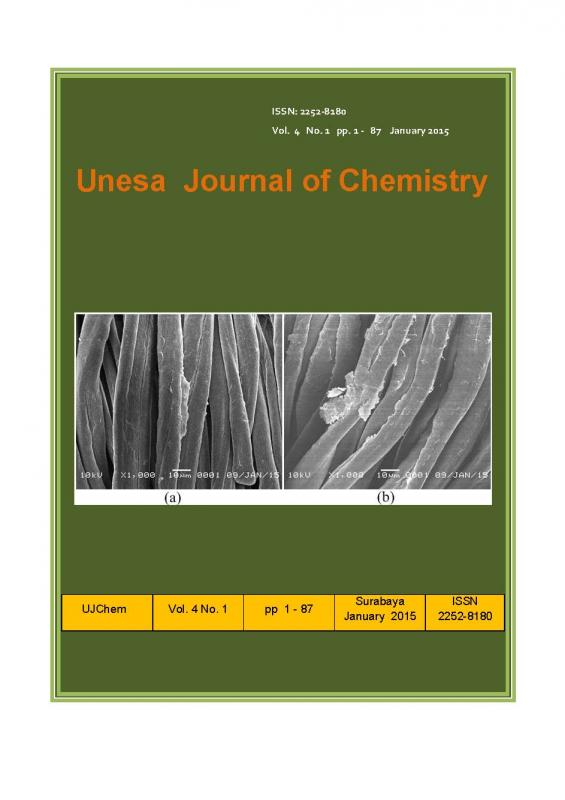SINTESIS NANOPARTIKEL PLATINUM DENGAN VARIASI KADAR GLISERINDAN UJI AKTIVITASNYA SEBAGAI PEREDAM RADIKAL BEBASSYNTHESIS NANOPARTICLE PLATINUM WITH VARIOUS CONCENTRATIONSOF GLYCERIN AND TEST ACTIVITY OF FREE RADICAL SCAVENGING
Main Article Content
Abstract
Abstrak. Telah dilakukan sintesis nanopartikel platina dengan variasi kadar gliserin dan uji
aktivitasnya sebagai peredam radikal bebas. Tujuan dari penelitian ini untuk mengetahui kemampuan
peredaman radikal bebas 1,1-difenil-2-pikrilhidrazil (DPPH) oleh nanopartikel platina dalam
matriks gliserin serta mengetahui pengaruh kadar gliserin dalam sintesis nanopartikel platina. Untuk
menguji peredaman radikal bebas digunakan spektrofotometer UV-Vis. Kadar gliserin yang
digunakan antara lain 1, 2, 3, 4, 5, dan 6%. Hasil penelitian menunjukkan bahwa karakterisasi
nanoplatina menggunakan spektrofotometer UV-Vis bahwa kadar gliserin pada sintesis berpengaruh
terhadap ukuran klaster nanoplatina yang dihasilkan berturut – turut adalah 10.30, 10.32, 10.34,
10.33, 10.30, dan 10.34 nm. Berdasarkan hasil spektrofotometer UV-Vis, nanoplatina yang telah
direaksikan dengan 1,1 difenil-2-pikrilhidrazil (DPPH) menunjukkan bahwa nanoplatina berpotensi
sebagai antioksidan.
Kata kunci: DPPH, gliserin, karakterisasi, nanoplatina, sintesis.
Abstract. The research has been done about synthesis of platinum nanoparticles with a variation
concentrations of glycerin and the activity as the scavenging of free radicals. The purpose of this
research for know the ability of free radical scavenger 1,1-diphenyl-2-picrylhidrazyl (DPPH) by
nanoparticle platinum in a matrix of glycerin and knowing the effect of the concentrations of glycerin
in the synthesis nanoparticle platinum. To test free radical scavenger the spectrophotometer UV-vis
used. Concentrations of glycerin used for nanoplatinum synthesis in 1, 2, 3, 4, 5, and 6%. The results
of research shows that characterization nanoplatina using spectrophotometer UV-vis in levels of
glycerin in the synthesis effect to the measure of nanoplatinum cluster is 10.30, 10.32, 10.34, 10.33,
10.30, and 10.34 nm. Based on the results of the spectrophotometer UV-vis , the nanoplatinum that
has reaction with 1,1-diphenyl-2-picrylhidrazyl (DPPH) shows that nanoplatinum potential as an
antioxidant.
Keyword: DPPH, glycerin, nanoplatinum, characterization, synthesis.

